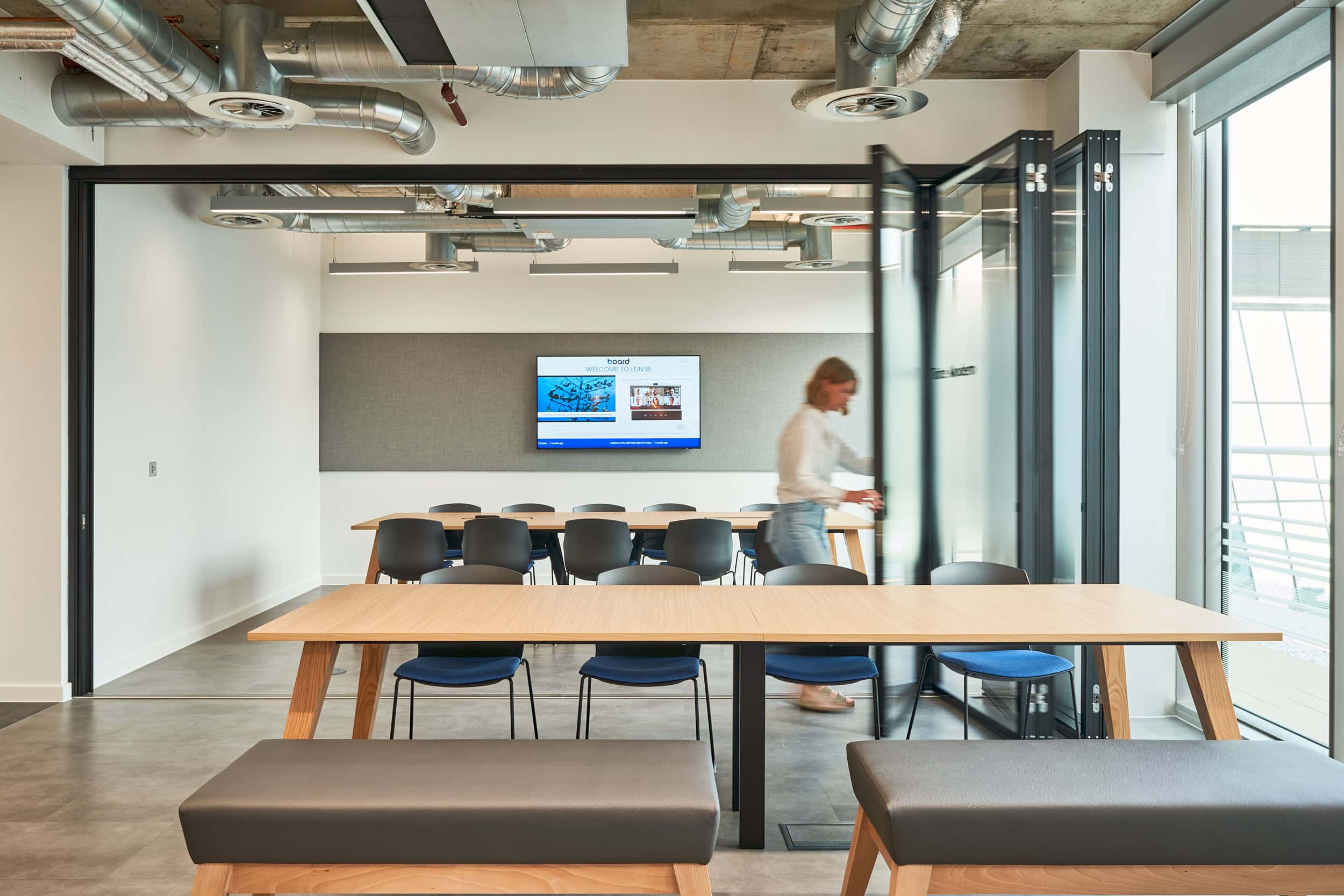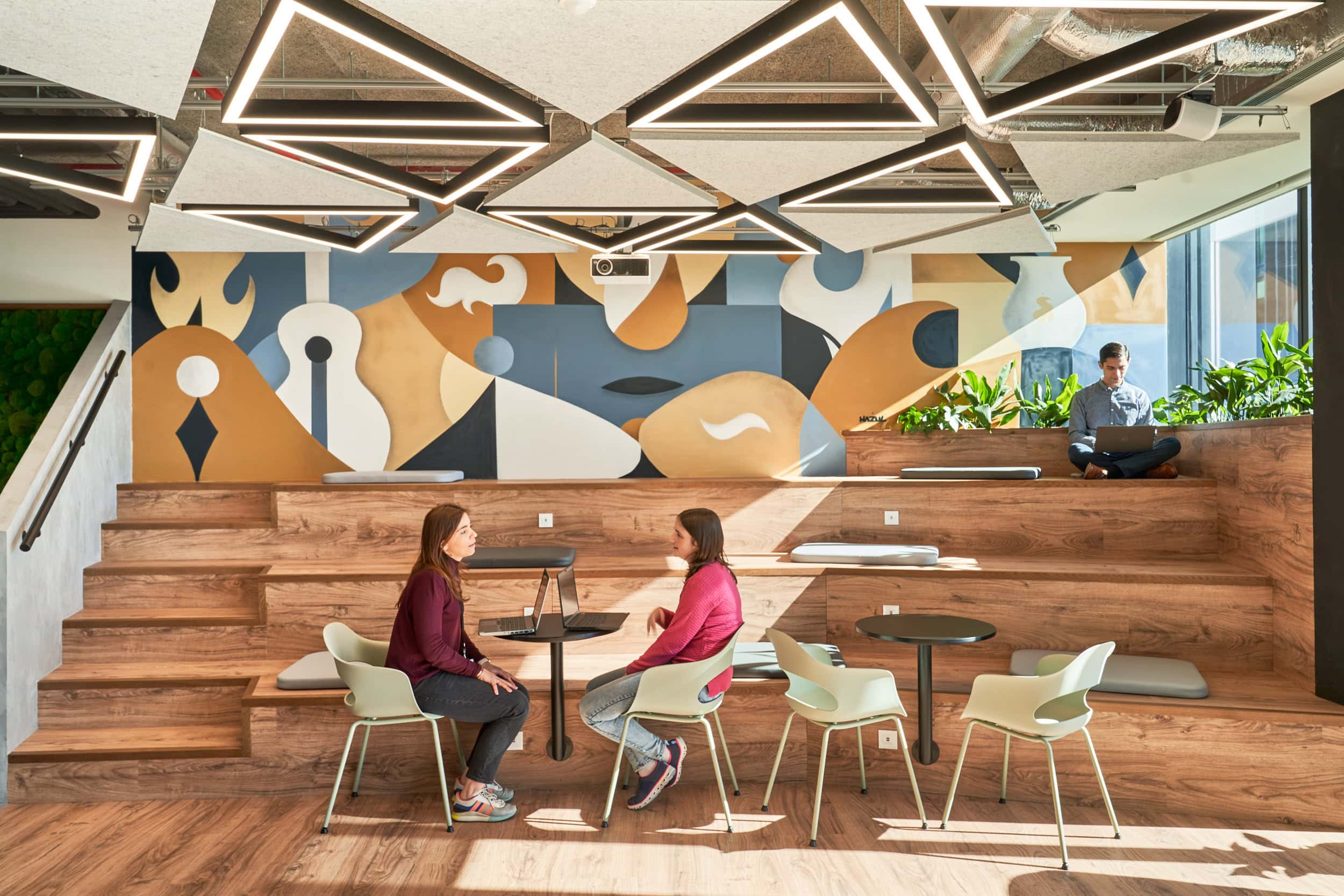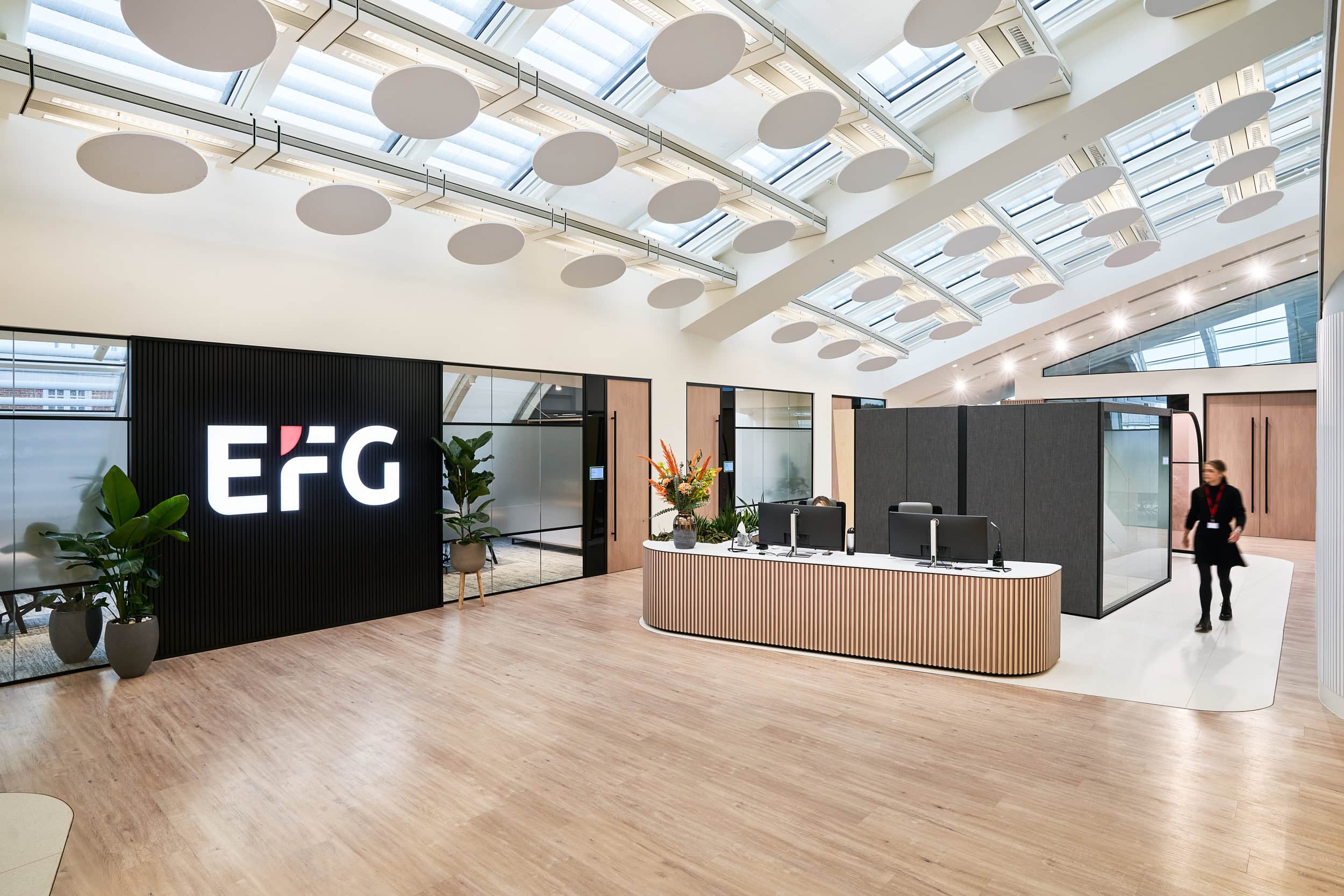Cultivating workplace wellbeing: a blueprint for designing healthy and happy offices
Our experts unpack workplace design strategies for optimal vitality, productivity and innovation to create thriving spaces.
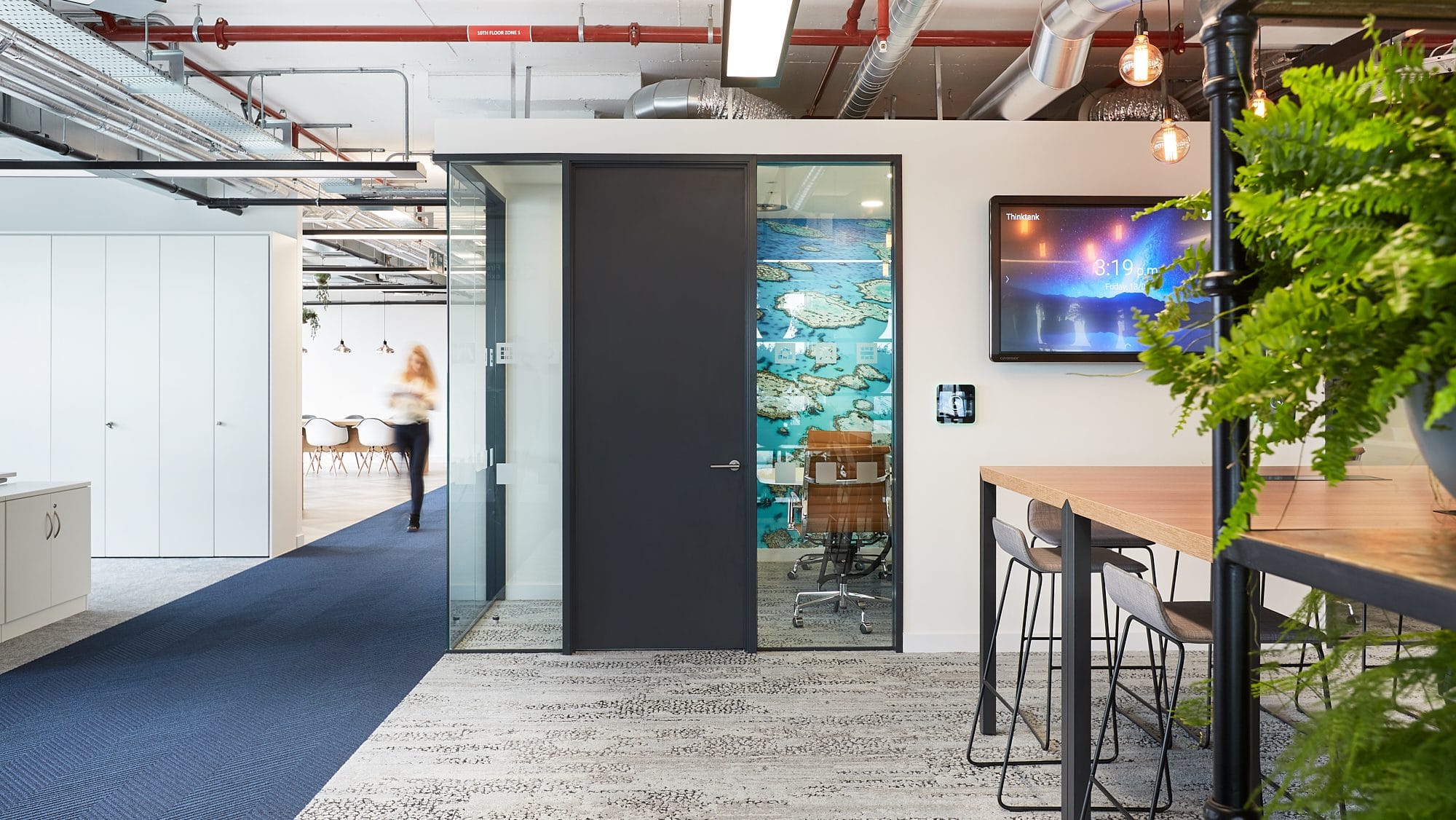
In today’s rapidly evolving work landscape, the global spotlight on workplace wellbeing and mental health underscores the pivotal role office design plays in nurturing employees’ overall health. A recent survey by Mind Charity, called the ‘Workplace Wellbeing Index,’ underlines the connection between a conducive work environment and positive outcomes for staff health, job satisfaction, and productivity.
As we increasingly return to the office post pandemic, professionals are increasingly spending a significant portion of their week in the office, we see the quality of the workspace serves as a tangible demonstration of an employer’s commitment to the health and wellbeing of their team. While aesthetics and functionality remain crucial, the emphasis now extends to how a space adapts to users’ evolving needs and experiences.
Here are some key strategies to contemporise your office design for optimal workplace wellbeing:
1. Elevating workplace wellbeing facilities:
With many of us now back to increasing our hours spent in the office, there is a residual desire to uphold the same wholesome work life balancing activities that working from home once allowed. Expectations for accommodating this are falling on employers and we are increasingly seeing employees demanding better workplace facilities. Requests for heightened hospitality facilities, wellbeing rooms, spaces for physical activity and access to fitness services at work are all things we are seeing designed into the workplace more often.
Establishing dedicated areas for mindfulness proves invaluable for individuals navigating stress or seeking moments of tranquillity. These purposeful spaces may take the form of serene meditation rooms, rejuvenating sleep pods, invigorating wellness rooms, or enriching libraries. Such thoughtful enhancements redefine the workplace, transforming it from a mere workspace into a versatile environment where employees can seamlessly integrate various daily activities, fostering a holistic approach to wellbeing that extends beyond professional responsibilities.
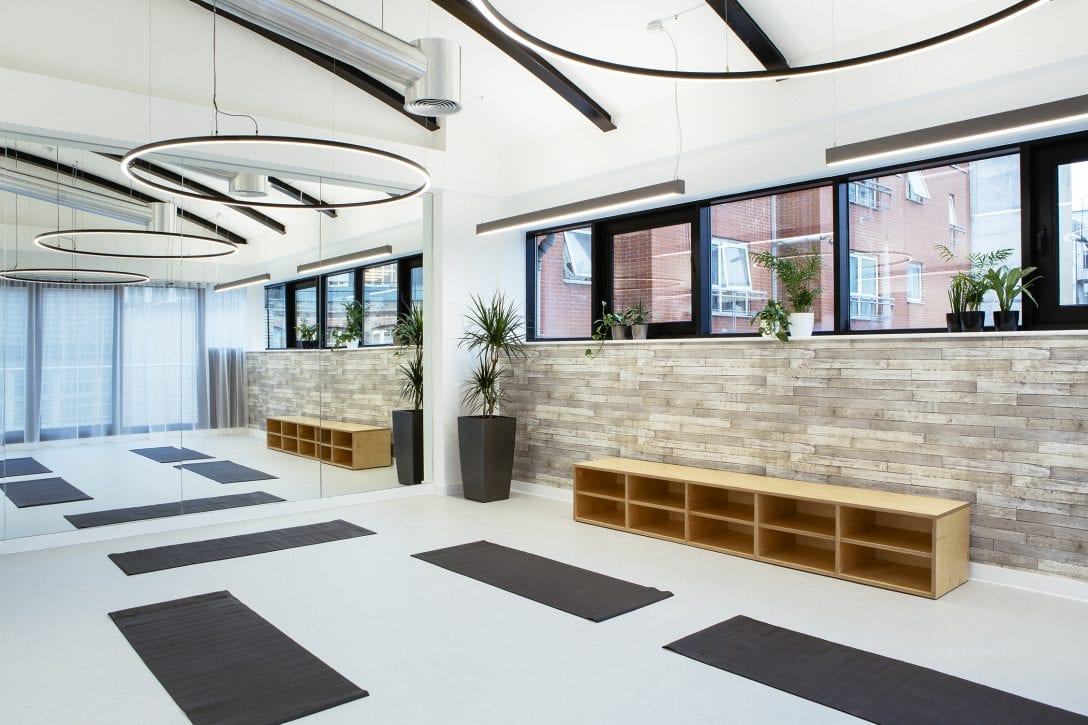
2. Embracing environmental elements:
Incorporating natural elements into the office environment contributes significantly to physical and mental benefits. Studies show that exposure to nature can improve productivity by 6% and increase creativity by 15%. Employees who are exposed to natural elements while at work also report a 15% high level of overall wellbeing.
Biophilic design, with its emphasis on connecting humans with nature, emerges as a cornerstone for enhancing workplace wellbeing. Whether through live plant installations, green walls, or biomimicry, the aim is to foster a strong connection with nature, ultimately leading to healthier and happier employees.
3. Prioritising physical health:
Recognising the intrinsic link between physical and mental health, many office designs now prioritise features that actively support physical wellbeing. Ergonomic furniture, including sought-after sit-stand desks, takes center stage in alleviating discomfort and enhancing productivity.
Even thoughtful spatial planning can encourage movement. An activity based working style office encourages people to make small changes to their working style depending on the activity they are conducting and this allows for more freedom of movement throughout their day.
4. Crafting an inclusive workplace environment:
Embracing inclusive design places a profound emphasis on creating an office space that effortlessly accommodates a diverse range of individuals, eliminating the necessity for employees to request specialised adaptations. This commitment extends beyond physical considerations to encompass more diverse needs arising from personality differences.
Adjustable light and sound settings are integral features that acknowledge and respect individual sensitivities. Providing flexibility in these environmental factors not only caters to specific preferences but also fosters a more comfortable and personalised working atmosphere for everyone.
Moreover, the concept of inclusivity extends to the design of diverse working environments. Recognising that individuals thrive in different settings, offering a variety of workspaces—from collaborative hubs to quiet retreats—ensures that every employee can find an environment conducive to their unique working style.
The consideration of different energy zones further enhances the inclusivity of the workplace. Acknowledging that individuals may operate optimally at varying energy levels throughout the day, designing spaces that accommodate both high-energy, dynamic tasks and low-energy, focused activities contributes to a harmonious and supportive work environment.
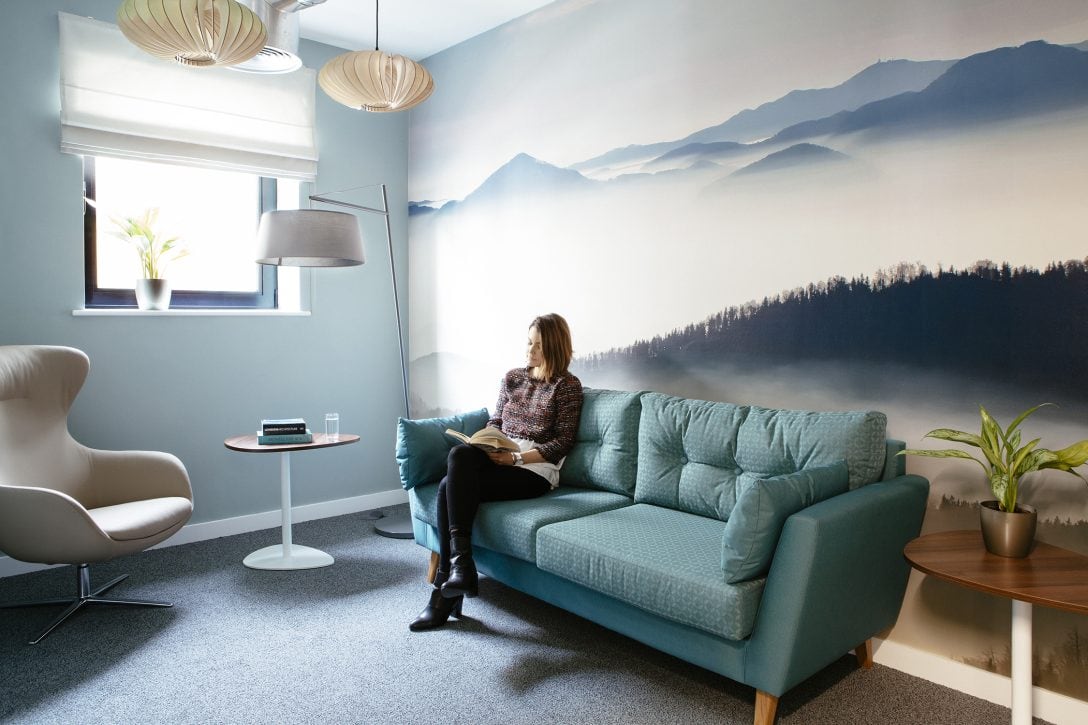
5. Future-ready offices: designing for lasting workplace wellbeing:
Recognising the dynamic nature of modern workspaces, the focus on workplace wellbeing emerges as a strategic investment. Well-designed offices not only cater to the evolving needs of employees but also position organisations as a forward-thinking and employee-centric. Meanwhile workspaces become catalysts for increased productivity, talent attraction, retention and the cultivation of a culture of innovation.
To talk to one of our experts about elevate your workplace for lasting wellbeing and a thriving workforce, get in touch.
